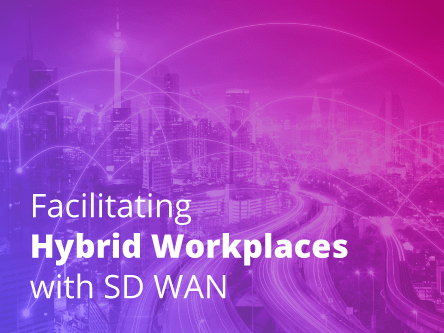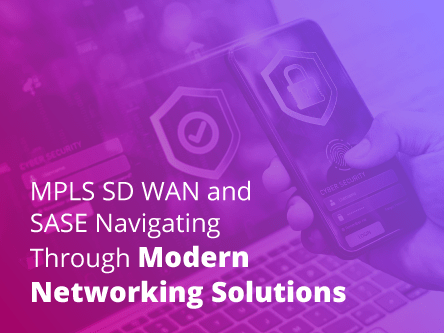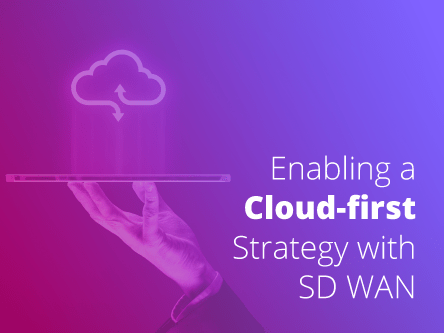In this article we will compare and discuss the difference between Software Defined Wide Area Network (SD WAN) and Multiprotocol Label Switching (MPLS) as well as the pros and cons of each network technology. Find out if you should choose SD WAN over MPLS for your next wide area network and what are the alternatives for SD WAN.
Differences between SD WAN and MPLS
One of the most significant differences between SD WAN and MPLS is that SD WAN is a fully software defined network. This makes SD WAN networks very flexible as the network is managed by software and automation. MPLS is an older network technology that relies on physical routing and switching management of the network.
This introduces another significant difference between MPLS and SD WAN. An MPLS network has a centralised Internet breakout, where all sites typically connect the Internet at a central office or data centre to access SaaS applications.
SD WAN on the other hand is a distributed wide area network. This means that in SD WAN, there is no main hub site like a central data centre. All sites are interconnected and can access corporate data and applications via the internet and the (public) cloud directly from the branch site.
Because of the decentralised nature of SD WAN, it is a more cost-effective network to operate compared to MPLS. An MPLS network uses only private dedicated connections while SD WAN can use private or Internet based connections from anywhere to establish a wide area network.
SD WAN Pros and Cons
One of the key advantages of SD WAN is that the network technology can be cheaper as compared to MPLS. SD WAN can use any available access technology anywhere, including mobile and fixed broadband Internet connections.
Another advantage of SD WAN is that network security management is already built in. MPLS uses a dedicated central network firewall, where SD WAN relies on a decentralised (cloud) web application firewall. That makes SD WAN more flexible as the network operates itself based on automation.
SD WAN is the preferred network technology for businesses that have a strong dependency on cloud providers. There is no longer a necessity to configure the network management around a central data centre.
Since SD WAN does not rely exclusively on dedicated connections but on flexible Internet connectivity, a SD WAN network can be less reliable. Especially if there are strict requirements on network quality of service (QoS) and latency sensitive applications.
For some businesses, SD WAN may introduce new challenges on compliance, as corporate data and applications are now fully distributed over 3rd party networks and cloud providers.
It is also important to consider that migrating from a centralised MPLS network to a decentralised SD WAN may impact your own IT organisation and staff. Security and the wide area network are no longer separate domains. They are now part of a single service where both security and network departments need to collaborate intensively together. They need to consider how remote workers access the network securely.
MPLS Pros and Cons
The most important benefits of MPLS are reliability, network security and greater performance. MPLS networks are exceptionally reliable because they use dedicated private connections to connect other offices and users to the corporate data centre. These dedicated networks do not run on public internet infrastructure but are provided by an MPLS provider over a closed network.
This makes MPLS networks highly secure as data cannot be intercepted by hackers via the public internet. Since corporate applications and data travel over a separate private network, the performance of MPLS is greater. Latency sensitive applications such as video conferencing perform exceptionally well on MPLS networks.
However, MPLS networks have limitations and cons that businesses should be aware of. MPLS networks can be more difficult to manage and operate as it requires lots of manual configuration.
Dedicated MPLS connections can be more expensive compared to SD WAN, which can run on any type of access technology from any carrier or Internet service provider.
Its centralised characteristics make MPLS also less suitable for organisations that want to start consuming more public cloud services. MPLS networks are designed for networks with a centralised data centre and a central, physical network security perimeter firewall.
SD WAN or MPLS?
The question whether to choose SD WAN over MPLS depends on the cloud strategy of your business.
If your business has a strong focus on maintaining and growing a private cloud, then MPLS is the preferred network technology over SD WAN.
However, if your business is increasingly adopting software as a service, hybrid cloud and needs more flexibility, then SD WAN is preferred over MPLS. Combining SD WAN with Secure Service Edge (SSE) provides a Zero Trust Network Access to connect branch offices to any remaining application in private data centres, Cloud based SaaS and connecting remote worker to both. SSE and SD WAN combined is known as Secure Access Service Edge (SASE).
SASE is the best automated network and security technology for businesses that rely heavily on cloud applications and software as a service.







